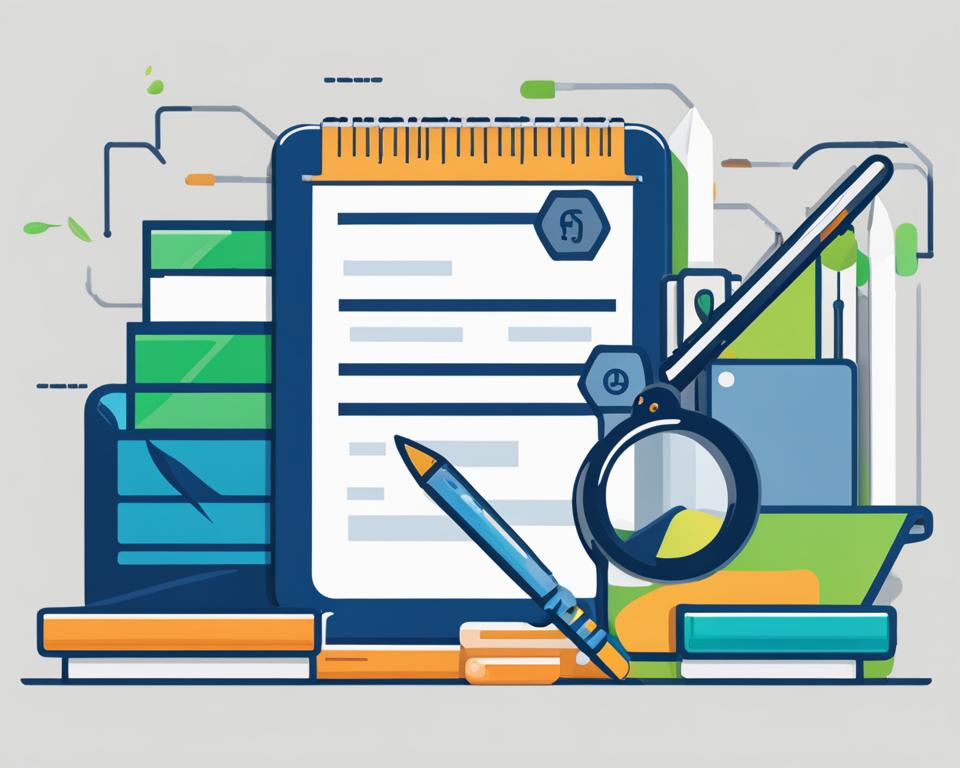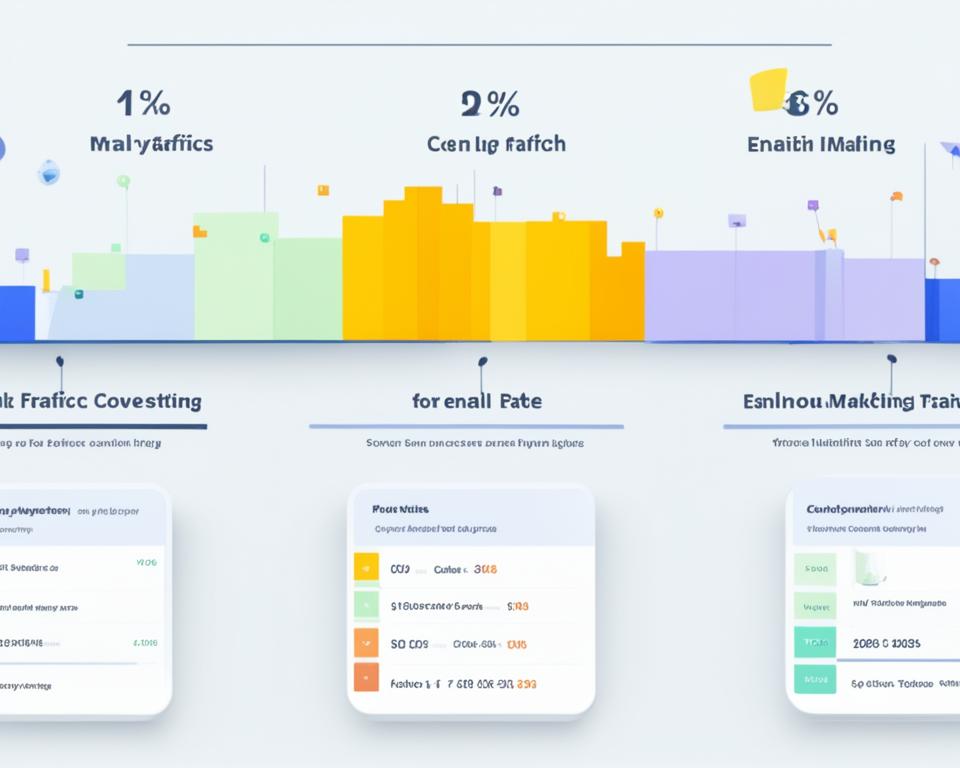Selamat datang di artikel kami tentang bagaimana membangun kampanye email marketing yang personal dan relevan dalam konteks digital marketing di Indonesia. Kami akan membahas strategi dan wawasan untuk menciptakan kampanye yang berdampak dan resonan dengan audiens target Anda.
Dalam dunia digital marketing, email marketing tetap menjadi salah satu alat yang efektif untuk terhubung dengan pelanggan Anda. Namun, dalam menghadapi persaingan yang semakin ketat, penting bagi kita untuk membangun kampanye email yang tidak hanya personal, tetapi juga relevan dengan minat dan kebutuhan pelanggan.
Kenapa begitu penting?
Strategi email marketing yang personal dan relevan memiliki potensi besar untuk meningkatkan keterlibatan pelanggan, meningkatkan konversi, dan meningkatkan efektivitas kampanye Anda secara keseluruhan. Dengan mengirimkan konten yang relevan dan disesuaikan dengan minat pelanggan, Anda dapat membangun hubungan yang lebih dalam dan terjalin dengan mereka.
Selain itu, kami akan berbagi tips tentang cara efektif mempersonalisasi konten email Anda, menulis konten yang menarik, teknik segmentasi dan targeting untuk mencapai audiens yang tepat, serta strategi optimasi pengiriman email sehingga email Anda benar-benar sampai ke kotak masuk pelanggan.
Anda juga akan belajar bagaimana mengintegrasikan email marketing dengan saluran digital lainnya seperti social media marketing, PPC advertising, dan SEO services untuk menciptakan strategi yang holistik dan menyeluruh.
Mari kita mulai memperkuat upaya digital marketing Anda dengan membangun kampanye email marketing yang personal dan relevan. Terus tingkatkan impact Anda dan berada di depan di dalam dunia yang kompetitif dengan memanfaatkan kekuatan email marketing.
The Power of Personalization in Email Marketing
Personalization is a key factor in the success of email marketing campaigns. When you personalize your emails, you create a more engaging and relevant experience for your subscribers, which can lead to higher open rates, click-through rates, and conversions. In this section, we will explore the power of personalization in email marketing and provide tips on how to effectively personalize your email content.
The Impact of Personalization
Personalization allows you to tailor your email content to the specific needs, preferences, and behaviors of your audience. By delivering relevant and targeted messages, you can capture the attention of your subscribers and make a stronger connection with them.
“Personalization is not just about using a subscriber’s first name in the subject line. It’s about delivering content that is genuinely valuable and meaningful to them.”
Here are some key benefits of personalization in email marketing:
- Increased Engagement: When your emails are personalized, your subscribers are more likely to open, read, and interact with your content. By showing that you understand their interests and preferences, you can grab their attention and keep them engaged.
- Higher Conversion Rates: Personalized emails have been proven to drive higher conversion rates. When you deliver targeted offers and recommendations based on a subscriber’s past interactions or purchase history, you increase the likelihood of them taking the desired action.
- Improved Customer Satisfaction: Personalization shows that you value your subscribers as individuals and not just as another contact in your database. By delivering relevant and useful content, you can enhance their overall experience with your brand and foster long-term loyalty.
Tips for Effective Email Personalization
Now that we understand the importance of personalization in email marketing, let’s explore some practical tips to help you personalize your email content effectively:
- Segment Your Audience: Divide your subscriber list into different segments based on demographics, interests, buying behavior, or any other relevant criteria. This segmentation allows you to deliver more targeted and relevant content to each group.
- Use Dynamic Content: Leverage dynamic content to automatically tailor your emails to each subscriber’s preferences. By using conditional statements and personalization tags, you can create unique and personalized experiences for your audience.
- Personalize Subject Lines and Preheaders: Grab your subscribers’ attention from the very beginning by personalizing your email subject lines and preheaders. Incorporate their name, location, or other relevant information to make your emails stand out in their crowded inbox.
- Recommend Relevant Products or Content: Analyze your subscribers’ past behaviors and interactions to recommend products or content that align with their interests. By showing that you understand their needs, you can increase the chances of them engaging with your email.
Remember, effective personalization goes beyond simply inserting a subscriber’s first name. It’s about delivering content that resonates with them on a deeper level. By implementing these tips, you can create personalized email campaigns that drive better results and strengthen your relationship with your audience.
| Benefits of Personalization in Email Marketing | Tips for Effective Personalization |
|---|---|
| Increased Engagement | Segment Your Audience |
| Higher Conversion Rates | Use Dynamic Content |
| Improved Customer Satisfaction | Personalize Subject Lines and Preheaders |
| Recommend Relevant Products or Content |
Crafting Compelling Email Content
Writing compelling email content is essential for capturing your audience’s attention and driving action. In this section, we will discuss best practices for creating engaging and persuasive email content that resonates with your subscribers. We will also explore the use of storytelling and visual elements to enhance the impact of your emails.
When crafting email content, it’s important to remember that your subscribers receive numerous emails every day. To stand out from the crowd and make a lasting impression, your emails need to be compelling and valuable. Here are some tips to help you create impactful email content:
- Know your audience: Understanding your target audience is crucial in creating relevant email content. Conduct thorough research to identify their preferences, pain points, and interests. This knowledge will help you tailor your content to meet their specific needs.
- Use personalization: Personalizing your email content can significantly increase engagement. Include the recipient’s name in the subject line or opening salutation to grab their attention. Additionally, segment your email list based on factors such as demographics and purchase history to deliver targeted content.
- Create compelling subject lines: The subject line is the first thing your subscribers see, so it needs to be attention-grabbing. Utilize persuasive language, create a sense of urgency, or ask intriguing questions to entice recipients to click and open your email.
- Keep it concise: People skim through emails, so keep your content concise and to the point. Use short paragraphs, bullet points, and subheadings to make your email easily scannable. This improves readability and ensures your key messages are effectively conveyed.
- Provide valuable content: Your email should offer something of value to your subscribers. Whether it’s informative articles, exclusive discounts, or helpful tips, make sure your content is relevant and addresses their needs. This builds trust and keeps them engaged with your brand.
- Incorporate storytelling: Storytelling is a powerful tool to connect with your audience emotionally. Use storytelling techniques to share compelling narratives that resonate with your subscribers. This helps build a personal connection and makes your emails more memorable.
Enhancing the Impact with Visuals
Images and visuals play a crucial role in capturing attention and conveying information effectively. Consider the following tips when incorporating visuals into your email content:
- Choose visually appealing images: Select high-quality, relevant images that align with your brand and email’s purpose. Visuals should enhance the overall message and draw the reader’s eye.
- Optimize image sizes: Large image files can slow down email loading times. Optimize your images to ensure fast loading without compromising quality.
- Use alt text: Alt text provides alternative descriptions for images, ensuring that subscribers who have images disabled can still understand the context. It also helps with accessibility and search engine optimization.
- Include videos: Videos can be a powerful way to engage your audience. Consider embedding videos in your emails or linking to video content to provide a richer experience.
By following these best practices and incorporating visual elements, you can optimize your email content to grab attention, foster engagement, and drive action. Craft captivating emails that resonate with your audience and leave a lasting impact.
Segmentation and Targeting Strategies
In order to ensure the success of your email marketing campaigns, it is crucial to implement proper segmentation and targeting strategies. By segmenting your email list and effectively targeting specific customer segments, you can deliver personalized and relevant content that resonates with your audience. This not only increases the chances of your emails being opened and read but also helps improve overall engagement and conversion rates.
There are various segmentation strategies that you can employ based on different criteria such as demographics, behavior, interests, and purchasing patterns. By analyzing the data you have on your subscribers, you can identify key characteristics and preferences that allow you to create more targeted campaigns. This enables you to tailor your content specifically to the needs and interests of each segment, maximizing the impact of your emails.
Here are some common segmentation strategies:
- Demographic segmentation: This involves dividing your audience based on characteristics such as age, gender, location, and occupation. It allows you to target campaigns that are relevant to specific demographic groups.
- Behavioral segmentation: By analyzing your subscribers’ behavior, such as their past purchases, browsing history, and interactions with your emails, you can create segments that cater to their specific preferences and interests.
- Interest-based segmentation: This strategy involves segmenting your audience based on their interests, hobbies, or preferences. By delivering content that aligns with their interests, you can increase engagement and encourage further interaction.
Once you have segmented your audience, the next step is to target each segment effectively. This involves crafting targeted email campaigns that speak directly to the interests and needs of each segment. By doing so, you can deliver highly personalized content that feels relevant and valuable to your subscribers.
Leveraging data and analytics tools can help you understand the preferences and behaviors of your audience, allowing you to create targeted campaigns. By tracking metrics such as open rates, click-through rates, and conversions, you can measure the effectiveness of your segmentation and targeting strategies, and make data-driven improvements to optimize your campaigns.
Key Benefits of Segmentation and Targeting:
“Effective segmentation and targeting enable us to deliver personalized and relevant content that resonates with our subscribers, leading to higher engagement and better campaign performance.”
Proper segmentation and targeting strategies in email marketing offer several key benefits:
| Benefits of Segmentation and Targeting |
|---|
| 1. Higher open and click-through rates |
| 2. Increased conversion rates |
| 3. Enhanced customer satisfaction |
| 4. Improved email deliverability |
| 5. Better ROI on email marketing campaigns |
By implementing effective segmentation and targeting strategies, you can deliver personalized and relevant email marketing campaigns that capture the attention of your audience and drive better results. By understanding the needs and preferences of your subscribers and crafting tailored content, you can build stronger relationships, improve engagement, and ultimately achieve your business objectives.
Optimization Techniques for Email Deliverability
Ensuring your email campaigns reach the intended recipients’ inbox is crucial for the success of your email marketing efforts in Indonesia. To improve email deliverability, you need to optimize various aspects of your campaigns, including email design, authentication, and reputation management.
First, let’s focus on email design. Incorporating responsive design principles ensures that your emails are well-presented across different devices, enhancing the overall user experience. Additionally, using compelling visuals and clear, concise copy helps grab your recipients’ attention and encourages them to take action.
Authentication is another vital aspect of optimizing email deliverability. Implementing technologies like Sender Policy Framework (SPF), DomainKeys Identified Mail (DKIM), and Domain-based Message Authentication, Reporting, and Conformance (DMARC) helps establish trust and proves that your emails are legitimate. This reduces the chances of your emails being flagged as spam or phishing attempts.
“Implementing technologies like SPF, DKIM, and DMARC helps establish trust and proves that your emails are legitimate.”
Managing your sender reputation is equally important. This involves closely monitoring your email performance, avoiding sending emails to inactive or unengaged subscribers, and promptly addressing any issues that may arise, such as high bounce or complaint rates. By maintaining a good sender reputation, your emails are more likely to bypass spam filters and reach your recipients’ inbox.
Now, let’s explore the role of web analytics in measuring the effectiveness of your email campaigns. Web analytics tools provide valuable insights into key metrics such as open rates, click-through rates, conversion rates, and overall engagement. By analyzing this data, you can identify trends, understand user behavior, and make data-driven decisions to optimize your campaigns.
Optimization Techniques:
- Implement responsive email design to ensure optimal viewing on different devices.
- Incorporate visually appealing and relevant images to enhance engagement.
- Craft clear, concise, and compelling email copy to drive action.
- Use authentication technologies like SPF, DKIM, and DMARC to establish trust.
- Maintain a good sender reputation by monitoring email performance and addressing issues.
- Utilize web analytics tools to track key metrics and gain insights for optimization.
By employing these optimization techniques, you can enhance your email deliverability, increase engagement, and drive better results from your email marketing campaigns in Indonesia.

Integrating Email Marketing with Other Digital Marketing Channels
In today’s digital landscape, it is essential to integrate email marketing with other digital marketing channels to create a cohesive and holistic strategy. By combining the power of different channels, such as social media marketing, PPC advertising, and SEO services, you can amplify the reach and impact of your email campaigns.
Leveraging Social Media Marketing
Social media platforms offer immense opportunities to complement your email marketing efforts. By sharing your email content on social media, you can extend its visibility and engagement potential. Incorporate social sharing buttons within your emails to encourage recipients to share your content with their networks. Additionally, create targeted social media ads to promote your email campaigns and attract new subscribers.
Enhancing PPC Advertising with Email Campaigns
Pairing email marketing with pay-per-click (PPC) advertising can yield powerful results. Use your email list to create custom audiences for your PPC campaigns, ensuring that your ads reach the same individuals who have shown interest in your brand. By aligning your messaging across email and PPC, you can create a consistent brand experience and increase the likelihood of conversion.
Optimizing SEO Services with Email Marketing
Email marketing and search engine optimization (SEO) services go hand in hand. Include links to relevant content on your website in your email campaigns to drive traffic and improve your website’s SEO ranking. Additionally, by analyzing email engagement metrics, such as open rates and click-through rates, you can gather valuable insights about your audience’s preferences and tailor your SEO strategy accordingly.
| Channel | Benefits |
|---|---|
| Social Media Marketing | – Extends the reach of your email campaigns – Boosts engagement by encouraging sharing – Attracts new subscribers through targeted ads |
| PPC Advertising | – Aligns messaging across channels – Increases brand exposure and conversion – Targets individuals already interested in your brand |
| SEO Services | – Drives traffic to your website – Improves SEO ranking through relevant links – Provides insights for SEO strategy optimization |
Integrating email marketing with other digital marketing channels allows you to create a comprehensive marketing ecosystem. With the power of email combined with social media, PPC advertising, and SEO services, you can maximize your campaign’s impact and drive meaningful results for your business.
Measuring and Analyzing Email Marketing Performance
Measuring and analyzing the performance of your email marketing campaigns is crucial for continuous improvement. By understanding the effectiveness of your email campaigns, you can make data-driven decisions to optimize your strategies and drive better results. Let’s explore some key metrics, tools, and technologies that can help you gain valuable insights into your email marketing performance.
1. Key Metrics for Email Marketing Analytics
When it comes to measuring the success of your email campaigns, there are several key metrics that you should track:
- Email open rate: The percentage of recipients who open your emails.
- Click-through rate (CTR): The percentage of recipients who click on links in your emails.
- Conversion rate: The percentage of recipients who complete a desired action, such as making a purchase or filling out a form.
- Bounce rate: The percentage of emails that were not delivered to recipients’ inboxes.
- Unsubscribe rate: The percentage of recipients who choose to unsubscribe from your email list.
2. Tools and Technologies for Email Marketing Analytics
To analyze the performance of your email marketing campaigns, you can leverage various tools and technologies that provide valuable insights. Here are some popular options:
- Email service providers (ESPs): ESPs offer built-in analytics features that allow you to track and measure key metrics for your email campaigns.
- Web analytics platforms: Platforms like Google Analytics can provide deeper insights by tracking user behavior on your website after they click on links in your emails.
- A/B testing tools: A/B testing allows you to test different variations of your emails and measure their performance to identify what resonates best with your audience.
- Email deliverability tools: These tools help you monitor and improve the deliverability of your emails by identifying issues that may affect their reach.
3. Leveraging Data Insights to Optimize Your Campaigns
Once you have collected data from your email marketing campaigns, it’s important to analyze the insights and use them to optimize your strategies. Here are some tips:
“Data-driven decision-making is key to improving the performance and effectiveness of your email marketing campaigns. Analyze the metrics and identify trends or patterns that can help you understand what works and what doesn’t. Use this information to refine your email content, targeting strategies, and delivery timing.”
By constantly monitoring and analyzing your email marketing performance, you can make informed decisions and continuously optimize your campaigns to achieve better results.
| Metric | Definition | Importance |
|---|---|---|
| Email Open Rate | The percentage of recipients who open your emails. | Indicates the effectiveness of your subject lines and email preview text. |
| Click-Through Rate (CTR) | The percentage of recipients who click on links in your emails. | Measures the engagement and interest generated by your email content. |
| Conversion Rate | The percentage of recipients who complete a desired action. | Evaluates the effectiveness of your email in driving desired outcomes. |
| Bounce Rate | The percentage of emails that were not delivered to recipients’ inboxes. | Indicates the quality of your email list and potential deliverability issues. |
| Unsubscribe Rate | The percentage of recipients who choose to unsubscribe from your email list. | Reflects the relevancy and value of your email content to your subscribers. |
By leveraging the power of data, you can refine your email marketing strategies, enhance engagement, and drive better results. Remember to regularly analyze your metrics, experiment with different approaches, and continuously optimize your campaigns to stay ahead in the competitive landscape of digital marketing.

Conclusion
In conclusion, incorporating personalized and relevant email marketing campaigns is an essential strategy to elevate your digital marketing efforts in Indonesia. By implementing the techniques and best practices discussed throughout this article, you can create impactful campaigns that resonate with your target audience and drive meaningful results.
With the increasing competition in digital marketing, it’s crucial to stay ahead and leverage the power of email marketing. By crafting compelling email content, segmenting your audience, optimizing deliverability, integrating with other digital channels, and measuring performance through web analytics, you can maximize the effectiveness of your campaigns and achieve your marketing goals.
Remember, your subscribers are looking for content that speaks directly to them and addresses their needs and interests. By personalizing your emails and making them relevant, you can establish a strong connection and build trust with your audience. Email marketing, when executed strategically, has the potential to drive engagement, conversions, and ultimately, business growth.
So, embrace the power of email marketing in your digital marketing strategy and unlock its potential. With careful planning and execution, you can achieve remarkable results and establish a strong presence in the competitive digital landscape of Indonesia.
FAQ
What is the importance of building personalized and relevant email marketing campaigns?
Personalized and relevant email marketing campaigns have a significant impact on engagement, conversion rates, and overall effectiveness. They help to resonate with your target audience, increase relevance, and drive meaningful results in your digital marketing efforts.
How can I effectively personalize my email content?
To effectively personalize your email content, you can use dynamic content based on the recipient’s demographics, preferences, and behavior. You can also segment your audience and tailor the messaging to specific customer segments. Additionally, you can include personalization elements such as the recipient’s name in the email to create a more personalized experience.
What are some best practices for writing compelling email content?
To craft compelling email content, it’s important to understand your audience’s pain points, needs, and interests. Use persuasive language, compelling subject lines, and engaging visuals. Incorporate storytelling techniques to make your content more relatable and captivating. Include a clear call-to-action to encourage recipients to take the desired action.
How can segmentation and targeting improve email marketing campaigns?
Segmentation and targeting allow you to send relevant and tailored emails to specific customer segments. By segmenting your audience based on demographics, behaviors, or preferences, you can deliver more personalized content, increasing engagement and conversion rates. Targeting ensures that your emails reach the right audience, improving overall campaign effectiveness.
What optimization techniques can I use to improve email deliverability?
To improve email deliverability, you can optimize your email design and layout by using responsive templates that render well on different devices. Implement email authentication protocols such as SPF, DKIM, and DMARC to enhance email security and reputation. Regularly monitor and manage your sender reputation, maintain a clean email list, and comply with anti-spam regulations.
How can I integrate email marketing with other digital marketing channels?
Integration of email marketing with other digital marketing channels such as social media, PPC advertising, and SEO services can amplify the reach and impact of your campaigns. You can include social sharing buttons in your emails, promote email subscriptions on social media platforms, and use email to drive traffic to PPC ads or landing pages optimized for SEO. This integration creates a cohesive strategy and enhances your overall digital marketing efforts.
What metrics should I track to measure email marketing performance?
Some key metrics to track email marketing performance include open rates, click-through rates, conversion rates, bounce rates, and unsubscribe rates. Tracking email deliverability, list growth, and engagement metrics such as time spent reading emails and social media shares can also provide valuable insights. Utilizing web analytics tools can help you measure and analyze these metrics to optimize your email marketing campaigns effectively.
How can I leverage data insights to optimize my email marketing campaigns?
By analyzing data insights from email marketing campaigns, you can identify areas for improvement and make data-driven decisions. Use A/B testing to experiment with different email elements and determine what resonates best with your audience. Analyze email engagement patterns, customer behavior, and conversion rates to refine your email content, segmentation strategies, and targeting methods.





